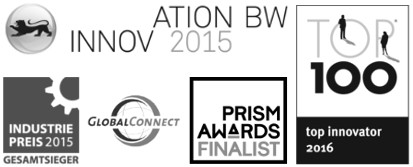German Winter Service / Winter Maintenance trusts in Mobile Road Weather Sensor MARWIS
The following two examples show, that many German Winter Service / Winter Maintenance trusts in Mobile Road Weather Sensor MARWIS:
MARWIS supports winter service in Waiblingen, Germany
In Waiblingen close to Stuttgart MARWIS has been in use since last year already and does a great job: "Our first driver of the day performs a tour to check the road conditions. He now has the chance to to notice that a de-icing is necessary quickly. Through this, we are able to react much faster than before and send out gritting vehicles to the right spots," states team leader Achim Wieler. In particular, the road temperature, water film height and friction are the important to the winter service in order to organize and plan the day exactly.
local TV report (in German only)
Read more about MARWIS in operation in winter maintenance in another German City called Offeburg in the Tab "Background".
MARWIS - Mobile Advanced Road Weather Information Sensor
MARWIS is the first road and runway weather sensor detecting road conditions, temperatures, friction and other parameters mobile and in real time from driving vehicles.
MARWIS is the first road and runway weather sensor detecting road conditions, temperatures, friction and other parameters mobile in real time for vehicles.
- Road condition (dry, moist, wet, ice, snow, slush, chemically wet), road surface temperature, ambient temperature, water film height up to 6mm, dew point temperature, relative humidity, ice percentage, friction (calculated)
- Optical LED transmitters, photo receivers, pyrometer, infrared
- Mobile, plug and play, 100 measurements per second with max. output rate of 10Hz, multifunctional, real time thermal mapping, wireless data transfer
- Bluetooth, RS485, CAN-Bus
MARWIS at winter service in Offenburg: noticeable reduction in workload
At the technical services in Offenburg MARWIS runs with the telematics system from blueworld. It's mounted on the gritting vehicle and takes over tasks that previously all had to be done manually.
After the first few months with MARWIS aboard, head of operations Raphael Lehmann explains MARWIS' tasks as follows:
"We use MARWIS on the 60 kilometers of our winter maintenance routes including federal roads, feeder roads, residential and urban areas. Particular bridges are important measurement spots during the tours. MARWIS in combination with the tracemate output device from blueworld works like a traffic light: The traffic light colors stand for different road condition types (red means that the road is icy and should be spread; yellow, that the road status is becoming critical and green that the road is dry and safe). The integration into the blueworld tracemate system combines many functions at once. Based on the shared use of blue world output device through the sensor, a further display is redundant. Thus, the windscreen view is not hindered.
On the winter service tour, our drivers encounter many high and low levels that accompany different weather conditions and temperature fluctuations. In low-lying areas there are often foggy conditions, in higher ones snow uses to occur more often. In such cases, MARWIS is a useful decision-making tool and supplies me at the data center with real time weather data. By using these data, I make quick decisions whether to scatter road salt or not. If you consider that before the times of MARWIS winter service drivers needed to stop in the middle of the street and test the slipperiness on the road with the shoe, the new process is a huge relief for us. We plan to equip our fleet with further MARWIS devices which, among other things, will also be used on to cycle and foot paths. The MARWIS then will additionally help to avoid bicycle accidents and pedestrian falls."















